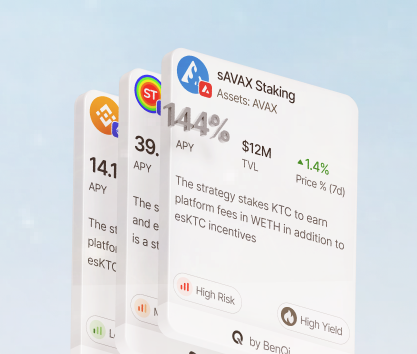The DeFi ecosystem is one of the most interesting financial domains in the whole world. It has been expanding and contracting wildly throughout the years. However, it is often a good exercise to look at the bigger picture and consider the long-term perspective while crunching some numbers that frequently seem untied from each other.We will discuss some interesting crypto investment statistics and various metrics of the DeFi ecosystem to determine whether it is a good idea to allocate capital to this domain. We have been gathering the data from various sources, including Statista, Dune.com, DeFiLlama, De.Fi, Bloomberg, and many others.
Demographics and adoption
One of the most important metrics for many investors who think years in advance is the rate of adoption. Decentralized finance promises to change the way we interact with money. However, the process has been quite slow, and the revolution is still nowhere to be seen. At the same time, the numbers are growing across the board.
Here are some intriguing stats:
- The number of unique wallet addresses that have interacted with the EVM ecosystem is 193 million, a massive 238% year-on-year growth.
- The number of monthly active DeFi users in the Ethereum network has reached its peak in September 2024 when it eclipsed the 21.7 million mark.
- According to the European Banking Authority, over 7.2 million users engage with DeFi products in the EU.
- According to Statista, the number of users of decentralized finance protocols is expected to reach 53 million by the end of 2025.
- Close to 650 million people globally own cryptocurrency, which is roughly 6.8% of the total world population.
These numbers paint a very interesting picture. While numbers are quite small, the growth rate is impressive. The EBA believes that decentralized finance is still a niche phenomenon, but it has been looking into various ways to regulate the domain and even participated in the development of MICA (markets in crypto-assets regulation).
Due to low institutional crypto adoption, it is still hard to gauge the true performance of many digital assets. Cash inflows are generated by individuals with capital. Right now, only Bitcoin and Ethereum ETFs have been approved by the SEC, leading to a massive surge in prices across the board in 2024 when Bitcoin broke through the $100K resistance level. As of the time of writing, Solana is also heavily discussed as a viable target for ETFs.
When it comes to analyzing various digital assets, looking at the historical perspective and analyzing various market statistics is quite important. Here are some of them:
- Bitcoin is one of the best cryptocurrencies in terms of market performance. However, it had a very high minimum volatility of 31.4% and regularly exceeds 50% in average monthly volatility.
- The average annualized return on BTC investments is 43.4% in 2024. Historical returns of Bitcoin are over 80.1% since 2015 and over 35,800% since 2008.
- The crypto market capitalization has reached its ATH of $3.71 trillion in December 2024. The current estimate is $2.5 trillion.
- Bitcoin Dominance has never dipped below 34.7% while the combined market cap of top 98 tokens (excluding Ethereum) has never risen above 53.1%.
- According to Kraken, the average crypto investor earned close to $887 in net gains in 2023, which was a massive upgrade compared to the previous year’s $7,100 in losses.
Volatility in crypto markets remains the biggest concern for all investors and even non-investors. However, the market has been going in the upward direction since 2008 with temporary hiccups. Larger cryptocurrencies like Ethereum and Bitcoin tend to continue appreciating under all sorts of market circumstances.
Security and user protection
Regulatory concerns have been expressed as the main reason not to invest in cryptocurrencies by 27% of non-investors. Owners of tokens express a much lesser degree of anxiety, as only 10% of them believe that the lack of institutional oversight is a big issue.
Here are some interesting statistics that may be of interest to potential investors in the DeFi ecosystem:
- 31% of surveyed investors did not report crypto gains in their taxes, according to CoinLedger. 18% did not know that they had to do it.
- Most investors (31%) value upward price momentum more than security (21%) when it comes to analyzing their attitude toward crypto.
- Crypt scams data suggest that 62% of all losses in 2024 were attributed to just two security failures, with $360 million lost by DMM Bitcoin and BTCTurk.
- Technology is still the weakest link in security. 98.5% of all losses happened due to hacks and social engineering, according to Immunefi.
- Ethereum and Binance Smart Chain are the main targets for hackers, with 71% of incidents involving either of these chains.
- CeFi was the biggest target for hackers in 2024. 70% of all successful exploits happened to CeFi institutions, with DeFi losing only $171 million (30%).
- DeFi losses to hacks and exploits have fallen by 25% in 2024, while CeFi losses grew by 984% in the same period.
We are seeing two very important trends. For starters, the decentralized finance ecosystem is demonstrating its resilience against different cyber threats. Many protocols are managing security issues quite well.
Secondly, the battle of “regulated vs unregulated crypto markets” is still dominated by crypto enthusiasts who do not care much for regulation. In fact, the vast majority of current owners of crypto do not think that regulation is needed even for consumer protection.
The third takeaway is the attitude of investors toward risks and potential returns. The vast majority of people allocating capital to DeFi and CeFi markets are interested in profits above all else! The optimal risk-reward ratio in blockchain is heavily leaning in the direction of risk, according to multiple surveys of investors in the ecosystem.
As a final note, it is important to understand how macroeconomic indicators (inflation, GDP) correlate with the crypto market. It seems that investors are interested in using digital assets as a hedging mechanism against fiat inflation.
Is crypto worth investing in?
After crunching some numbers, it is clear that there are many positive dynamics in the crypto ecosystem. Many experts believe that it is necessary to allocate some investable capital to the blockchain industry and purchase mainstream coins like BTC or ETH. However, there are many skeptics who think that it is a wiser move to wait until regulators decide what to do with the DeFi sector and its many assets.
We still do not know the impact of innovative technologies on the crypto industry. For instance, the use of machine learning in crypto forecasts or the strong focus on improved UX/UI enhanced by AI may create a strong paradigm shift and increase the interest in DeFi.
Another issue is the sheer number and variety of digital assets in the DeFi ecosystem. Many newcomers simply cannot choose which assets to focus on.
If you are interested in building a balanced portfolio with cryptocurrencies and various digital financial instruments, it is an excellent idea to visit the Rivo Yield Marketplace. All showcased strategies were picked by experienced professionals and verified by trained specialists. You will be able to pick an investment strategy that has an optimal risk-reward ratio. Choose based on your preferences and risk style!









